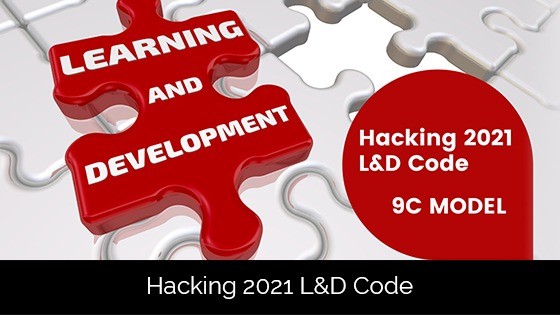We call it ‘New Normal’ or ‘Temporary Abnormal’, L&D now requires a whole new approach to talent development. Here is a 9 C approach needed to develop your workforce professionally in 2021.:
If you are dealing with a young workforce, here are few stats from Deloitte report that should make a note of
- 71% of them, who are likely to leave an organisation in 2 years, are not satisfied with their skills.
- 69% per cent aspire to be leaders in the next five years
- 60% want training interventions to develop their leadership skills.
With the right L&D strategies, companies have a great chance of retaining and developing their talent and cultivating their loyalty.
Today’s workforce is not only tempted by better salaries and looking to have autonomy over their work and creative freedom.
- Collaboration and Cahoots – It’s a world of social proof. Instead of one-to-many classroom format training programme, adopt collaborative training where participants learn from each other. Ideal learning environment involves less lecture and more collaboration with peers. Group-based projects that emulate the work environment and authentic assessments are suitable for today’s workforce. Creating communities where participants can learn from mentors, peers and managers and contributing their own experience or expertise is impactful and empowering. Trainer facilitates a process to ensure proper structure to the learning cycle.
- Continuous and Consistent – A significant part of keeping workers happy is providing continuous training and coaching. Changing behaviour or developing a new skill takes time, and it needs a coach or a trainer to work regularly with the participants to impact positive and permanent change. It can only achieve this if companies invest in long term (6-12 months) interventions rather than just one-off training programme of 1-2 days. Continuous training allows them to grow within the current position. It also helps attract talent as over 35% of this generation said they would be more willing in an employer if they offer exceptional training and development opportunities.
- Correlate and Connect – Workplace today is less authoritative, where decisions and actions are justified continuously. Flexibility and recognising the socio-emotional rationale behind new ideas and processes are expectations of today’s employees. Employees value a piece of information that is relevant to their lives and can connect to their personal and professional situations. They prefer hands-on or application-based case studies, where new knowledge is discovered and synthesised actively between group members. The goal for trainers here is to connect the learning environment to participants’ performance context to convince them of its relevance. When trainers and instructors provide the rationale behind policies and regulations in a learning environment, participants are more likely to respond positively. This means that training has to be hyper-relevant to the specific and evolving challenges of the corporate world.
- Compete and Challenge – This method has been successfully used in many companies, and its adoption is continuing to grow. Here the idea is to transform what could be a dull experience into a game with rewards, badges, and difficulty levels. Gamification of learning turns routine real-life activities into cool challenges and manages to keep people motivated and focused. This happens because it gets participants hooked on trying another level once the current one is complete.
- Cool, Calm and Casual – Think “laid back” when you plan a training session. Employees prefer a relaxed learning environment, with minimum pressure, more freedom to complete assignments and more space for personal expression and creativity. Sessions should be warm, empathetic, “no wrong answers” environment.
- Cultivate Culture of Coaching – Most employees take pride in their work and improve to feel belonged. They understand failure, but only as a route of getting better and learning from one’s mistakes. The coaching program will give them a specific set of goals to work. Besides, a coaching and mentorship intervention is beneficial for the company and will impart managers and teams about the power of open communication. This process also creates a more productive and engaged workforce, which is highly beneficial for the company.
- Camaraderie and Compassion – Culture strive for personal relationships. They prefer and appreciate organisation and trainers showing a personal interest in their training and development plans and achievement goals. Participants perform better at work when instructors connect with them on a personal level.
- Combine and Converge – For the digitally dependent workforce generation, it’s imperative that training merge digital with real-world scenarios. A blended approach of in-person, offline, online or classroom training is more impactful in today’s digital age. Training that prompt, encourage, and reward participants for real-world interaction and application effectively bind the learning.
- Creative Choices – In a world of YouTube, Amazon and Netflix that offer you more choices to have better engagement and take rates. You can do this with your employees to learn what they want and give them options for the training programme they are keen to learn. Training need gap analysis is essential, but once each employee’s needs are established, they choose the right programme concerning developmental needs. Employees are more likely to retain and improve through the intervention.
In Summary:
With the changing employees’ expectations and working environments, L&D needs to adapt to maximise impact. This will mean challenging some of the existing stereotypes and being open to new ways of L&D practices.





Leave a Reply